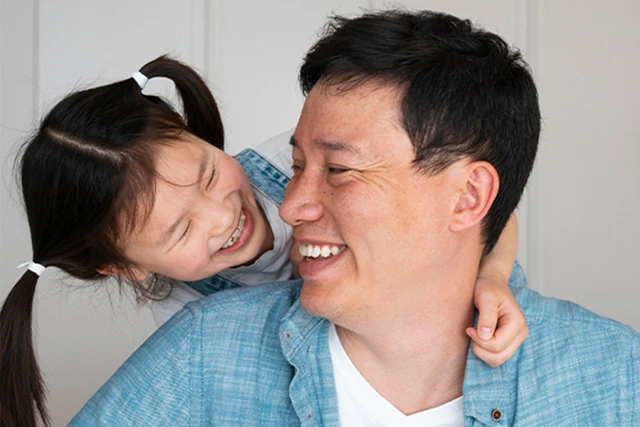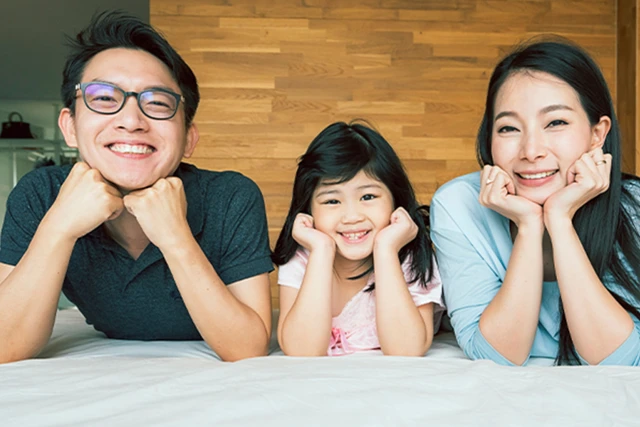
Who Does the Firstborn Child Usually Resemble?
1. Do Firstborns Really Look Like Their Fathers?
According to traditional beliefs, firstborn children tend to resemble their fathers. Some say this occurs so that the father will feel a stronger bond, support the child, and acknowledge the baby as his own. Another (somewhat archaic) theory claims that resemblance helps prevent the father from rejecting or harming the baby. These ideas date back to times long before paternity tests or the disapproval of cannibalism, for that matter.
Still, parents often find themselves asking, “Who does the baby look like?” upon first seeing their child. In fact, it's usually one of the first comments people make when they meet a newborn.
2. But Is This Theory True?
In 1995, a study at the University of California sought to test this theory by asking participants to match photos of one-year-old children to pictures of their fathers. The study involved 122 participants who tried to match images of children at ages 1, 10, and 20 to their respective parents. About 37% of mothers made correct matches for babies, while just under 50% of fathers did. Accuracy declined at age 10 and increased slightly again at age 20. A larger study in 2004 found that most infants resemble both parents. While the results in 1995 hinted at babies looking like their fathers, science hasn’t fully confirmed this. So why do so many people still believe firstborns resemble their dads?
Who Does the Firstborn Child Usually Resemble?
3. Genetics and Subjectivity
Perhaps it’s because personal experience and perception can be highly subjective. Scientifically, we know that children inherit both dominant and recessive genes and share 50% of their DNA with each parent. This allows for wide genetic variation. When a child is conceived, they inherit a copy of every gene from each parent. Some dominant traits may override others, while some recessive traits only appear if inherited from both parents.
This brings up another question: Are fathers who are more emotionally invested in the child more likely to see themselves in their baby? In fact, strong resemblance can trigger emotional bonding, even in distant fathers. One mother, Alex, recalled laughing when she saw her newborn—the baby was clearly a little female version of her husband. Over time, the child began to resemble Alex more, but in those early years? She was a mini version of her mother-in-law. Alex wasn’t the only one to notice. Parents often say their firstborns closely resemble them in their first year. But why? In Linda’s case, her husband looked nothing like any of their four children—though he was the biological father of them all. Why did only the first child resemble him?
Some researchers believe that, through evolution, newborns are “designed” to look like their fathers, helping to reinforce paternal attachment. Alex and many midwives, doctors, psychologists, and researchers agree: When a child is born, mothers tend to see the father in them—and often, so do fathers themselves, especially with firstborns. Friends and extended family may be more likely to notice changes over time. In Alex’s view, evolutionary theory still holds up. For many new fathers, a baby that looks like them creates an instant connection.
Who Does the Firstborn Child Usually Resemble?
4. Do Firstborn Daughters Look More Like Their Mother or Father?
In my experience, it depends. If the father is emotionally absent or away from home, or if the mother doesn’t truly love him during pregnancy, the child often ends up resembling the mother more. Couples with long-term marriages will understand—the emotional bond evolves over time. A deeper, more stable connection tends to shape the child’s appearance and personality in more nuanced ways. Conversely, if the mother loves the father deeply, and he is present, caring, and supportive, the child may resemble him more. That’s why firstborns often look like their mothers, and second-borns often resemble their fathers. Scientifically, however, there’s no proven link between a mother's emotional state during pregnancy and the physical resemblance of her baby. Children generally resemble the parent who has more dominant genes. Based on materials I’ve read, most children resemble their mothers more in both appearance and personality—though of course, nothing is absolute. One book suggested that the mother’s thoughts and.
Who Does the Firstborn Child Usually Resemble?
5. Traits Commonly Passed to Children
- Appearance: Involves genes from both parents. Traits like hair color, eye color, and facial features are commonly inherited.
- Hair Color: If either parent has dark hair (a dominant trait), their child is likely to have dark hair too. Lighter shades like blonde or red are typically linked to recessive genes.
- Eye Color: Brown eyes are dominant, while blue or gray eyes are recessive. Genetic mixing can also produce intermediate shades.
- Facial Structure: Features like jawline, nose shape, and chin can come from either parent or be a blend of both.
- Height and Body Shape: A child’s stature and build are largely determined by a combination of genetic factors. However, nutrition and physical activity also play a crucial role.
- Personality and Behavior: While genetics influence behavior, upbringing and environment also shape personality. Studies have shown that traits like sensitivity to stress or introversion/extraversion may be inherited.
- Intelligence: Both genes and environment play a role. Certain genes affect cognitive ability, but education, nutrition, and home environment are just as important.
Conclusion
The question of whether a firstborn child looks more like the mother or father doesn’t have a definitive answer. It depends on a mix of genetic and environmental factors. Every child carries a unique combination of their parents' DNA, shaped further by their upbringing.
What truly matters is not who the child resembles more but how much love, care, and guidance they receive. Genetics may determine appearance, but environment molds character. Ultimately, love from both parents is what helps a child grow into a happy, healthy individual—regardless of whom they look like.
Website: https://wilimedia.co
Fanpage: https://www.facebook.com/wilimediaen
Email: support@wilimedia.co
